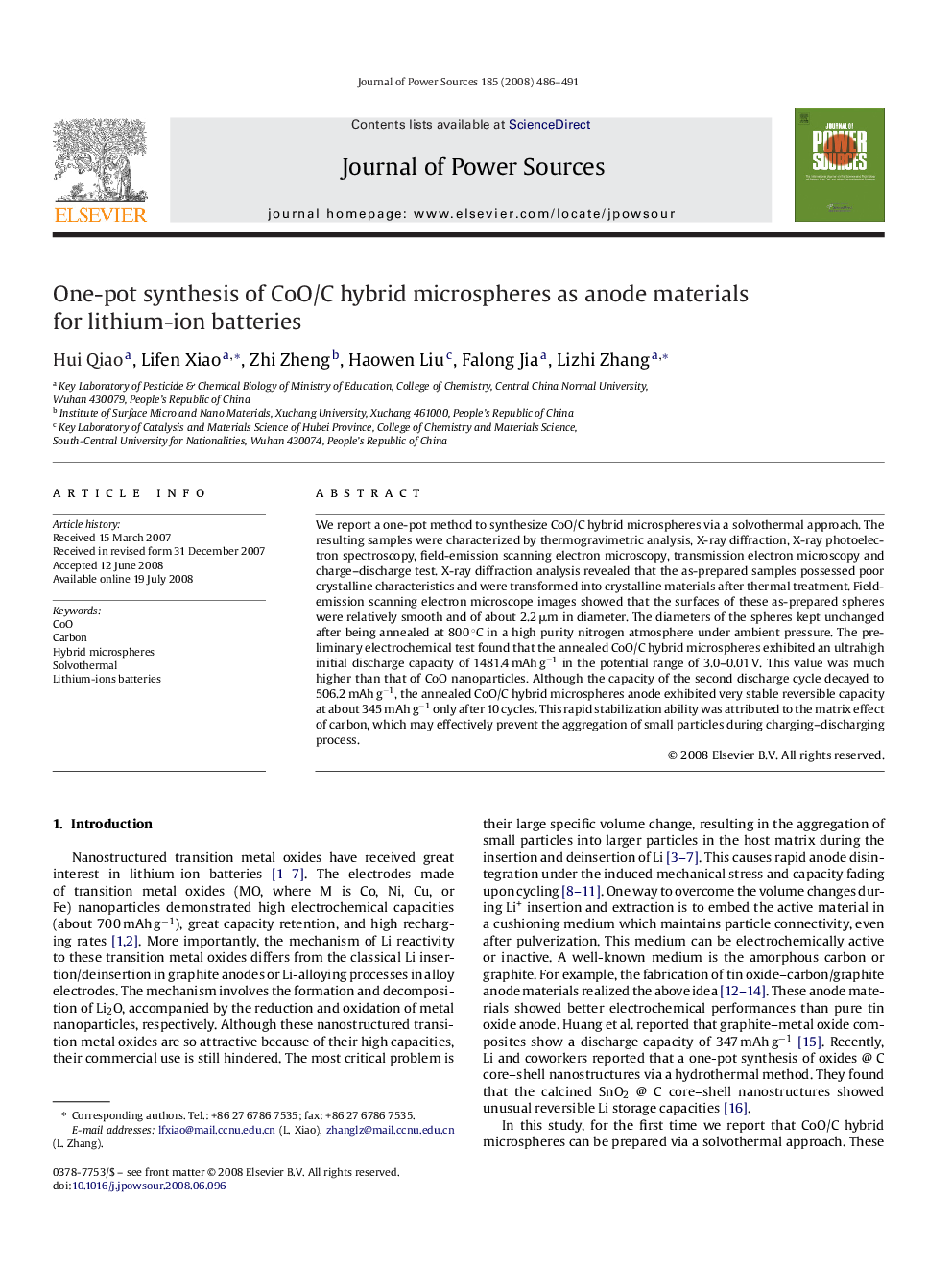| Article ID | Journal | Published Year | Pages | File Type |
|---|---|---|---|---|
| 1294439 | Journal of Power Sources | 2008 | 6 Pages |
We report a one-pot method to synthesize CoO/C hybrid microspheres via a solvothermal approach. The resulting samples were characterized by thermogravimetric analysis, X-ray diffraction, X-ray photoelectron spectroscopy, field-emission scanning electron microscopy, transmission electron microscopy and charge–discharge test. X-ray diffraction analysis revealed that the as-prepared samples possessed poor crystalline characteristics and were transformed into crystalline materials after thermal treatment. Field-emission scanning electron microscope images showed that the surfaces of these as-prepared spheres were relatively smooth and of about 2.2 μm in diameter. The diameters of the spheres kept unchanged after being annealed at 800 °C in a high purity nitrogen atmosphere under ambient pressure. The preliminary electrochemical test found that the annealed CoO/C hybrid microspheres exhibited an ultrahigh initial discharge capacity of 1481.4 mAh g−1 in the potential range of 3.0–0.01 V. This value was much higher than that of CoO nanoparticles. Although the capacity of the second discharge cycle decayed to 506.2 mAh g−1, the annealed CoO/C hybrid microspheres anode exhibited very stable reversible capacity at about 345 mAh g−1 only after 10 cycles. This rapid stabilization ability was attributed to the matrix effect of carbon, which may effectively prevent the aggregation of small particles during charging–discharging process.
